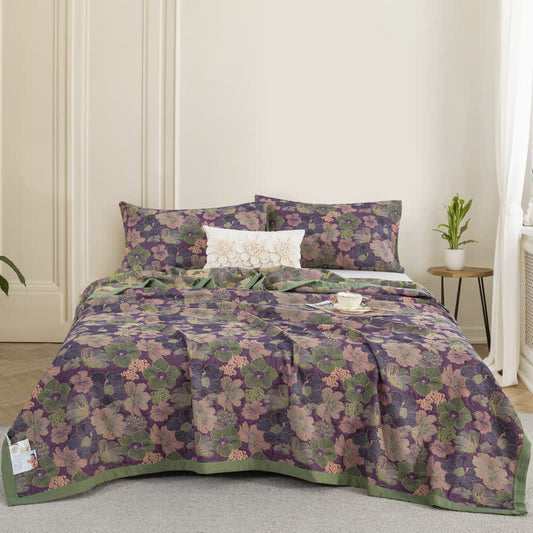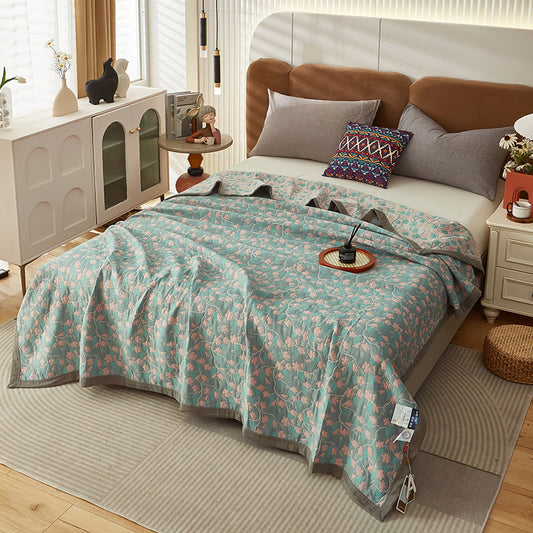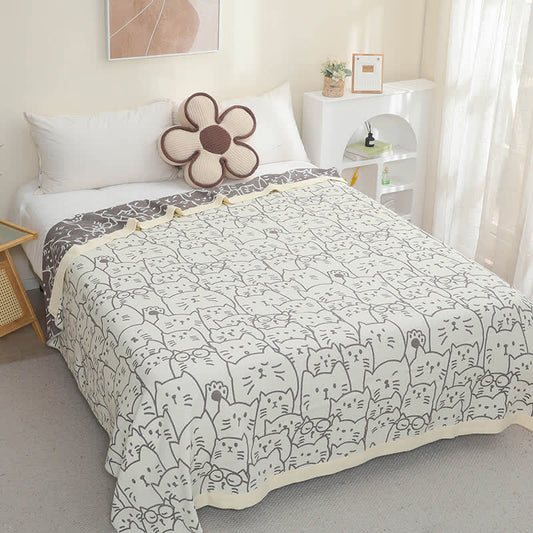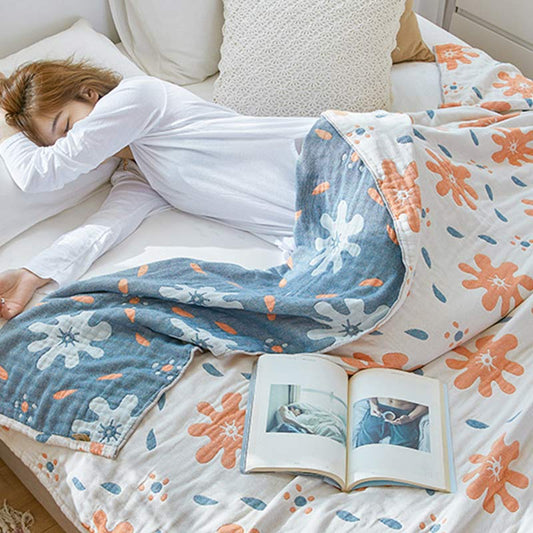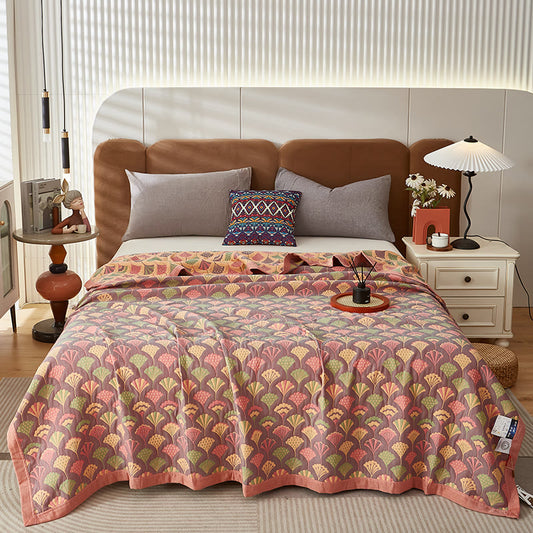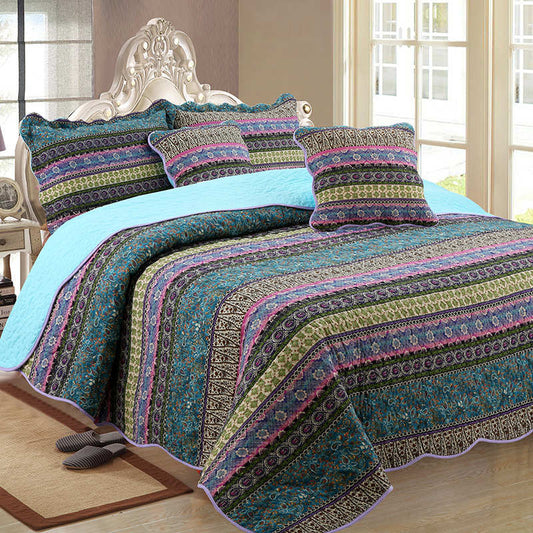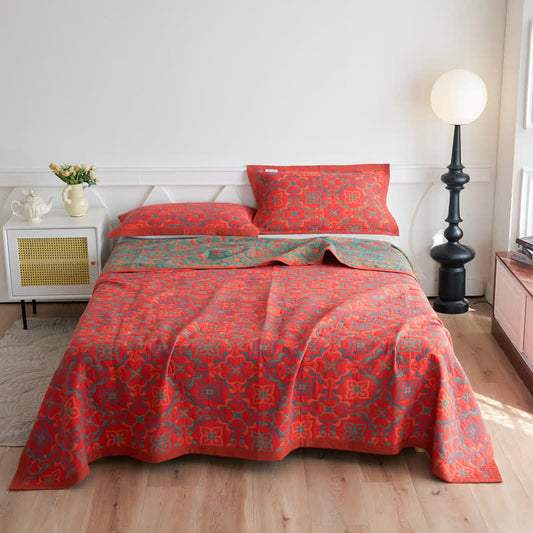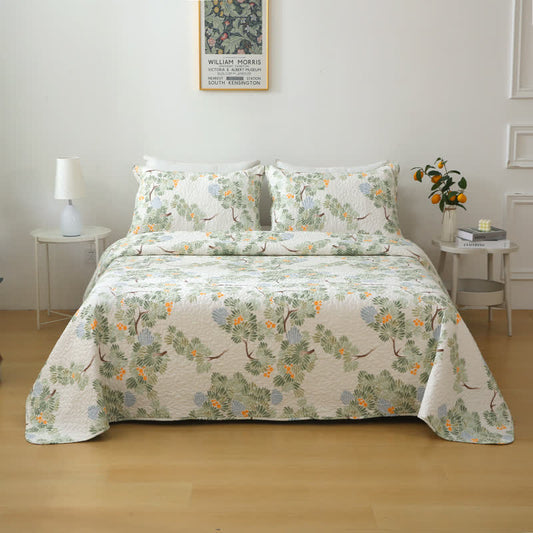FAQs
What materials are best for spring bedding?
Choosing the right materials for spring bedding is key for comfort and breathability in warmer months. Natural fibers like cotton, linen, and bamboo are ideal because they’re lightweight, breathable, and wick moisture. Cotton percale and sateen allow good air circulation to keep you cool, while linen’s loose weave offers excellent breathability and a natural cooling effect, perfect for spring’s temperature changes.
Besides natural fibers, blends like cotton with modal or Tencel add softness and moisture control, helping regulate body temperature and reduce sweat during spring nights. When picking spring bedding, opt for breathable, lightweight fabrics and avoid heavy materials meant for winter. Quality spring bedding ensures a fresh, cozy sleep all season.
How often should I wash my spring bedding?
Maintaining cleanliness in your spring bedding is important for both hygiene and comfort. Generally, it is recommended to wash your spring bedding once every one to two weeks to remove sweat, allergens, dust mites, and other debris that accumulate during regular use. Washing spring bedding regularly helps keep the fabrics fresh, breathable, and inviting, especially as you transition into warmer weather when you might sweat more at night. If you have allergies or sensitive skin, washing more frequently—about about once a week—can be beneficial for reducing irritants.
To extend the life of your spring bedding, always follow the care instructions on the label. Using mild detergents and washing in cool or warm water is usually advised to protect delicate fibers. Regular washing not only maintains the freshness of your spring bedding but also ensures that you enjoy a comfortable, clean sleeping environment throughout the spring season.
What is included in a typical spring comforter set?
A typical spring comforter set usually includes a lightweight comforter designed for moderate temperatures, along with matching pillow shams or pillowcases and sometimes a decorative bed skirt or additional accent pillows. The comforter in a spring comforter set tends to be thinner than winter versions, often filled with lightweight down alternatives or natural fibers to provide warmth without overheating. Many spring comforter sets also feature breathable and soft fabrics such as cotton or microfiber that enhance comfort during warmer months.
Some spring comforter sets offer coordinating accessories to create a cohesive look in your bedroom, making it easy to refresh your bedding with seasonal colors and patterns. Whether you’re looking for a simple two-piece set or a more elaborate arrangement, choosing the right spring comforter set allows you to balance style and functionality perfectly for springtime comfort.
How lightweight should a spring comforter be?
When choosing a spring comforter set, the comforter’s weight is crucial for optimal comfort during transitional weather. A spring comforter should be lightweight but still provide enough warmth for cooler spring nights. Typically, a comforter with a fill power between 200 to 400 and a moderate loft is ideal, offering breathability without excess insulation. Materials such as lightweight down alternatives or cotton blends are popular choices in spring comforters because they trap just enough heat while allowing air circulation.
A too-heavy comforter can cause overheating and disrupt sleep, while one that is too thin may leave you feeling cold. Therefore, a well-balanced spring comforter provides warmth and breathability, making your bedding comfortable for a wide range of spring temperatures. If you’re unsure, opting for a spring comforter set with a comforter designed specifically for mild weather can help ensure a restful night’s sleep.
How do I choose a springtime comforter set that matches my bedroom decor?
Choosing a springtime comforter set that complements your bedroom decor involves considering colors, patterns, and textures that harmonize with your existing furniture and design style. Soft pastels, floral prints, and light neutrals are popular choices for springtime comforter sets as they evoke a fresh, airy feel perfect for the season. You can also select a set with subtle textures or reversible designs to add versatility and visual interest to your room.
When shopping for a springtime comforter set, consider the overall theme of your bedroom — whether it’s modern, rustic, or traditional — and pick colors that either blend seamlessly or provide a tasteful contrast. Matching your springtime comforter set with decorative pillows, curtains, or rugs can help create a cohesive, welcoming space for spring.
What fill types are ideal for spring comforters?
Ideal fill types for spring comforters are those that provide lightweight insulation and breathability to keep you comfortable in mild temperatures. Popular fills include down alternatives such as polyester fibers, which mimic the softness of down without trapping too much heat, and natural options like cotton or wool blends that offer temperature regulation. These fill-in spring comforters allow air to circulate while maintaining warmth during cooler nights.
Some people also prefer hypoallergenic fills in their spring comforters to reduce allergens and improve sleep quality. Choosing the right fill for your spring comforter depends on your personal comfort preferences, but lightweight and breathable options are generally best suited for spring.
How do I store my spring comforter during the summer?
Proper storage of your spring comforter during the summer helps maintain its quality and freshness for the next season. Before storing, make sure your spring comforter is clean and completely dry to prevent mold and odors. It’s best to store it in a breathable cotton bag or a large storage bin with ventilation rather than a plastic bag, which can trap moisture and damage the fill.
Store your spring comforter in a cool, dry place away from direct sunlight to preserve the fabric and colors. Some people use lavender sachets or cedar blocks in storage to keep the bedding smelling fresh and to deter pests. Taking these steps ensures your spring comforter remains in excellent condition, ready to bring comfort next spring.
How do I keep my sheets fresh and cool during spring?
Keeping your sheets spring fresh and cool involves choosing breathable fabrics and proper care routines. Natural fibers like cotton, linen, or bamboo are excellent for sheets spring because they wick moisture and allow air to flow freely, reducing heat buildup. Washing your sheets regularly with mild detergent and drying them completely prevents odors and maintains their softness, contributing to a cool, refreshing feel.
Another way to keep your sheets spring fresh is to avoid heavy or synthetic fabric blends that trap heat. You can also use a light spray of linen water or essential oils during ironing or before bedtime to impart a pleasant scent. By selecting the right materials and care, your sheets spring will stay comfortable and inviting throughout the season.
Are there specific thread counts recommended for spring sheets?
Thread count plays a role in the feel and durability of spring sheets, but higher isn’t always better for warm weather. For sheets spring, a thread count between 200 and 400 is often recommended. This range provides a balance of softness and breathability without becoming too dense or heavy, which can trap heat. Cotton percale sheets within this thread count are especially popular for their crisp, cool feel.
Avoid very high thread count sheets for spring as they tend to be tightly woven and less breathable, making them less comfortable in warmer temperatures. When selecting spring sheets, focus also on fabric type and weave to ensure a cool, airy sleep experience.
How thick should a springtime comforter be?
The thickness of a springtime comforter should be moderate enough to provide warmth during cool spring nights but not so heavy that it causes overheating. Generally, a comforter with a light to medium loft works best for spring. Thickness can also depend on the fill material; down or down alternative comforters with a fill weight of around 200-300 grams provide suitable insulation without bulk.
Choosing a springtime comforter with an appropriate thickness ensures you stay comfortable as temperatures fluctuate in spring. If your climate is mild, a thinner comforter is often sufficient, but those in cooler areas might prefer a slightly thicker springtime comforter for added warmth.



